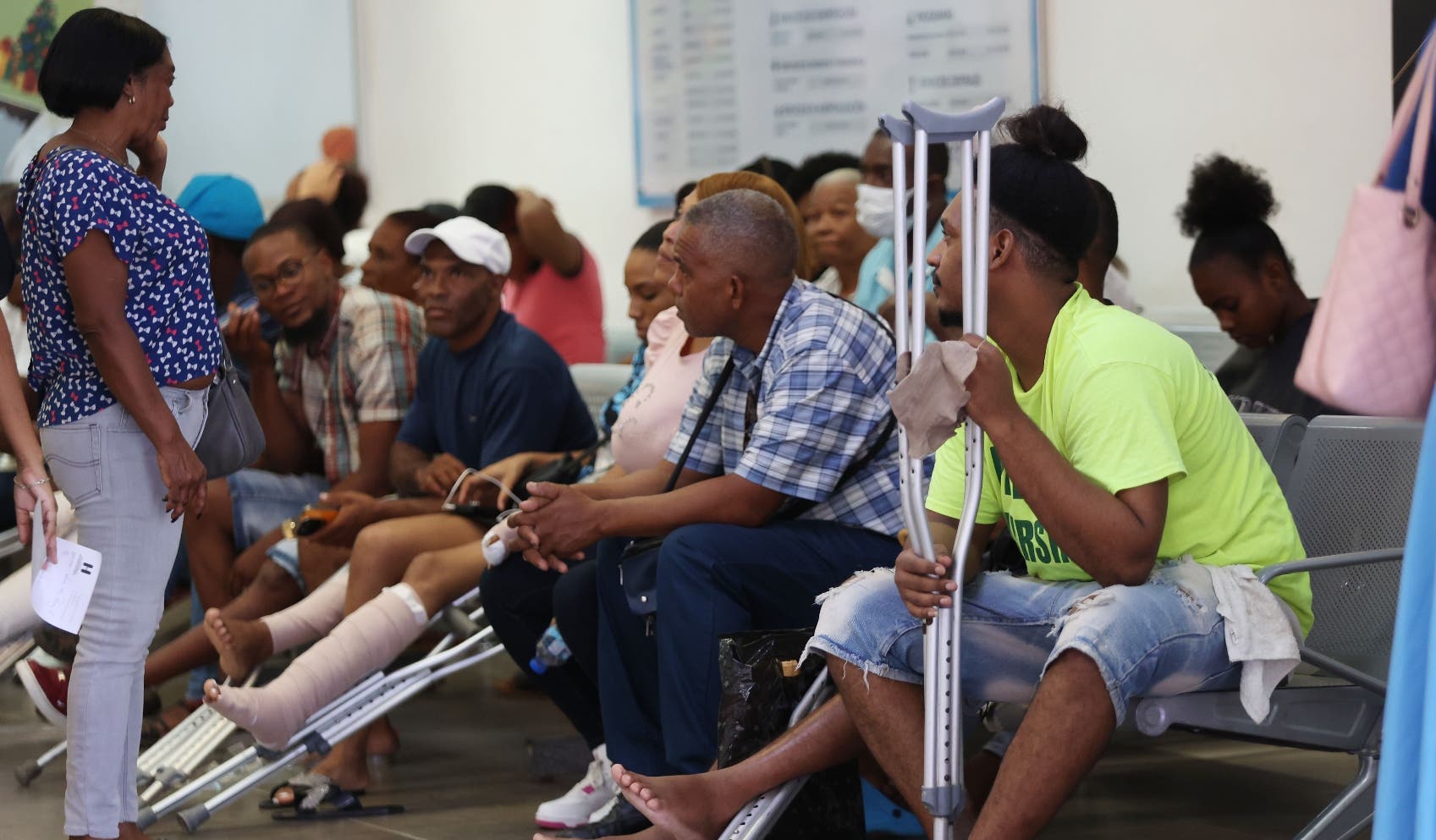Santo Domingo.-Iván García arrived early from his native San Cristóbal to the Ney Arias Lora Trauma Hospital with crutches in hand for his regular check-up, with his right foot covered in irons due to an injury that could be considered recent, however, this is not the case, he has been fighting with this trauma for three years now.
The 33-year-old is one of the 28% of accident patients who are left with a permanent injury, whether it be a scar, a hand that cannot move properly, difficulty walking again or quadriplegic, explained the director of the hospital.

Patient undergoing tibial bone reconstruction at Ney Arias Lora.
In García’s case, his ordeal began three years ago, when he was riding a motorcycle and was involved in a traffic accident with a van, resulting in the loss of a bone in his lower limb and a broken femur.
He said he has lost count of the number of operations he has undergone. He is currently undergoing bone reconstruction on his tibia.
She said that since that fateful day, nothing has been the same. “My life has changed because it is not the same to get around,” she said, adding that she used to work as a hairdresser, a profession she now carries out from home, but with difficulties.
Less productivity
Like García, most of the injured are at a very productive age, usually between 15 and 49 years old, which worries the specialists who see these cases, since the patients, in the best of cases, will be absent from work for several weeks and depending on the injury, it could lead to poor performance.
“This implies a reduction in the number of these people, who are the driving force of the country’s entire economy, because they are patients who cannot integrate into productive life, at least 45 days after suffering a fracture and who go to rehabilitation,” said Julio Landrón, director of Ney Arias.
Orthopedic traumatologist Marcelo Puello agrees, saying that this public health problem creates chaos in the family economy.
Long bones affected


Young man in a wheelchair entering a trauma hospital.
Puello said that the higher the speed, the greater the amount of trauma the person will suffer.
In this order, both Landrón and Puello explained separately that the main types of trauma they treat are fractures of long bones, such as the femur and tibia in the leg, the humerus in the arm, as well as fractures of the hip, knee and forearm.
Landrón explained that the most important injuries that lead to intensive care cases are head trauma and spinal cord contusions. In addition, there are multiple injuries to the chest, abdomen and pelvis, which are usually the most injured and are the cause of more than 80 percent of motorcycle accidents.
High cost
According to the director of the Darío Contreras Traumatology Hospital, César Roque, an orthopedic patient should cost 300 thousand pesos. “But if a maxillofacial patient is admitted, half a million; a spine patient, one million, and if the patient is in intensive care, two million,” he said.
A patient in intensive care spends between 5,000 and 6,000 pesos a day on oxygen alone, while the cost of medication to keep him sedated and reduce cerebral edema ranges from 100,000 pesos a day, or more.
“In other words, millions of pesos have to be invested in these patients, who spend 15, 20, 30 days in intensive care, in order to preserve their lives,” Landrón said.
Puello therefore believes that the economic cost of an accident for the State is unsustainable, since it must subsidize it several times over.
Additional insurance
— For motorcyclists
Marcelo Puello reiterated that motorcyclists should be charged additional insurance for health coverage, since most of them do not respect traffic signs and are the ones who have the most accidents on the roads.
Respect for traffic signs is essential
Prevention. Dr. Julio Landrón believes that it is vital to respect traffic signs and move slowly through the streets to avoid road accidents.
He urged the use of measures such as the use of a protective helmet by motorcyclists, since without one the person has a 68% chance of suffering a severe head trauma, as well as the use of seat belts by those who travel in other types of vehicles.
Also, do not consume alcohol while driving and do not use your cell phone.
He said that while it is true that accident prevention should be a priority, with continuing education from high school, it is no less true that seeing results would take one to three decades, so he considered that the focus should be on reducing deaths, as some institutions have done.














